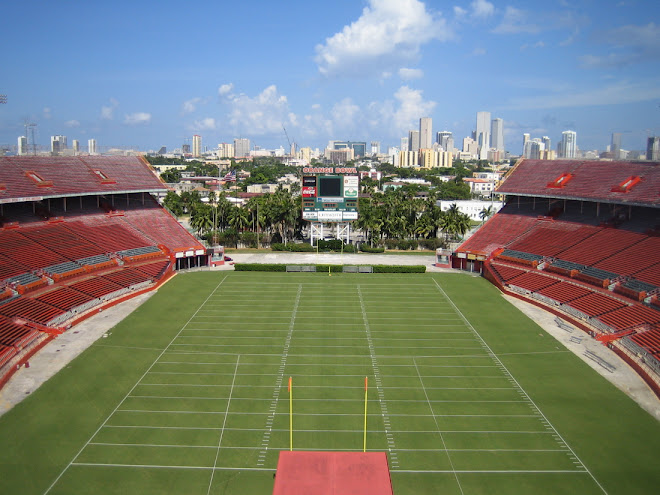Former Northern Illinois linebacker Jordan Delegal holds the national championship ring belonging to his father former University of Miami cornerback Lucious Delegal.
Jordan Delegal doesn't remember meeting his father. But he's heard the legendary stories. Jordan was only 16 months old when his father Lucious Delegal died in 1989. But father and son share a unique history of tragedy and triumph with the Orange Bowl.
Lucious Delegal grew up on the tough streets of Miami’s Opa Locka neighborhood. He had a very troubled childhood and was constantly in and out of juvenile detention centers, committing crimes as serious as armed robbery. But with help from his probation officer Allen Gainer, he appeared to turn his life around. He enrolled at Miami’s Norland School and quickly became a standout athlete and a good student. He earned a scholarship to Bethune Cookman College in Daytona Beach.
But Delegal wanted more. He wanted to prove he could compete against the best players in the country. After his sophomore year, he left Bethune Cookman and returned to South Florida to transfer to the University of Miami and compete as a walk-on. Lucious not only made the team, he was a significant contributor for the Canes from 1983 to 1984. On January 2, 1984, he achieve the dream of every college football player—winning the national championship. He saw action during Miami’s 31-30 victory over Nebraska. The following year, Delegal started his final game against UCLA in the 1985 Fiesta Bowl and graduated with a degree. After his college football career ended, Delegal's #47 jersey was given to a young freshman receiver from Fort Lauderdale. His name was Michael Irvin. Delegal pursued a career in pro football, but was cut in training camp by the Tampa Buccaneers.
But just five years after his national championship glory, Lucious Delegal’s life went horribly wrong. He was involved in a stormy relationship with Regina Washington, plagued with domestic violence. Washington had given birth to Delegal’s son Jordan. But on September 27, 1989, Lucious Delegal shot and killed his girlfriend in a post office parking lot and then turned the gun on himself. Lucious Delegal was 28. Regina Washington was 24.
Jordan Delegal was too young to realize the tragedy that ended the lives of his parents. He was raised by his grandmother Jacqui Coyler in Miami Gardens. Coyler had adopted Jordan's father when he was a child. Coyler made sure young Jordan knew about Lucious. Jordan became a huge Miami Hurricanes fan and attended games at the Orange Bowl. His favorite player was Ed Reed. He wanted to follow in his father’s footsteps and play for the Hurricanes.
Jordan eventually became a star athlete at Chaminade-Madonna High School in nearby Hollywood. He helped the Lions win a state championship in 2005. But he was not highly recruited. He began his college career at Marshall, but was thrown off the team after an on-campus fight. After playing at Joliet Junior College in Illinois, young Jordan Delegal found his permanent home at Northern Illinois University. He helped the Huskies to a 12-1 record as a senior in 2012. Jordan Delegal played his final college football game in the 2013 Orange Bowl during a 31-10 loss to Florida State. Although the Huskies lost, sitting in the stands at Sun Life Stadium was his grandmother Jacqui Coyler, the same woman who was at the Orange Bowl when the Jordan’s father Lucious and the Canes captured the 1983 national championship.








